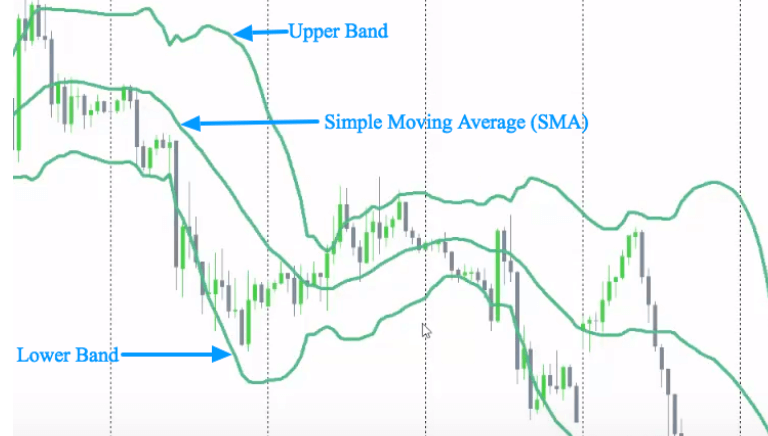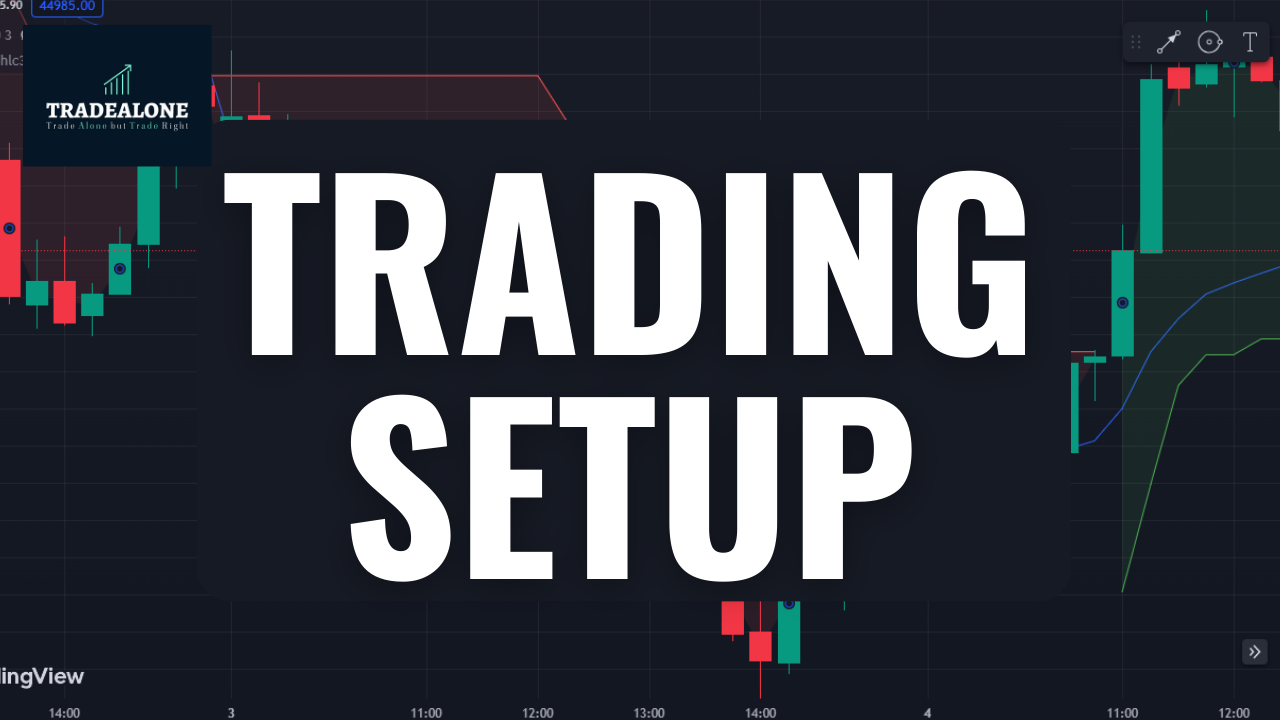Profit Making Idea
Bollinger Bands: A Comprehensive Guide to Successful Trading

Bollinger Bands are a popular technical analysis tool used by traders to identify overbought and oversold conditions in the financial markets. They provide valuable insights into market volatility and can help traders make informed trading decisions. In this article, we will explore the concept of it, their advantages and disadvantages, and how to effectively use them in your trading strategy.
Introduction

In the 1980s, John Bollinger created Bollinger Bands for technical analysis. They consist of a simple moving average (SMA) and two standard deviations shown above and below the SMA. The upper and lower bands represent dynamic levels of support and resistance, which can be used to identify potential price reversals.
Understanding Bollinger Bands

Bollinger Bands are calculated using the following steps:
- Calculate the simple moving average (SMA) of the price over a specified period.
- Calculate the standard deviation of the price over the same period.
- Multiply the standard deviation by a factor (usually 2) and add it to the SMA to get the upper band.
- Subtract the multiplied standard deviation from the SMA to get the lower band.
The resulting bands create a channel around the moving average, which expands or contracts based on market volatility.
Interpreting Bollinger Bands
This Strategy provide valuable information about market conditions. When the price moves above the upper band, it suggests an overbought condition, indicating that the market may be due for a correction. Conversely, when the price falls below the lower band, it suggests an oversold condition, indicating that a rally may be due.
Using Bollinger Bands for Entry and Exit Points

Traders often use this Strategy to identify potential entry and exit points. For example, a trader might consider buying a security when the price breaks above the upper band, as it could indicate a bullish breakout. On the other hand, a break below the lower band might signal a bearish breakout and prompt a trader to sell their position.
It is important to note that this Strategy should not be used as standalone indicators. They should be combined with other technical analysis tools and factors such as volume, trendlines, and candlestick patterns to confirm trading signals.
Factors to Consider when Using Bollinger Bands
While this Strategycan be a valuable tool in technical analysis, it is essential to consider other factors, such as fundamental analysis, before making trading decisions. Fundamental analysis involves evaluating the financial health and prospects of a company, which can provide insights into the underlying value of a security.
It is also important to understand the limitations of this Strategy. They are lagging indicators, meaning that they react to price movements rather than predict them. Additionally, during periods of high market volatility, this Strategy may expand significantly, making them less effective in identifying potential reversals.
Advantages of Bollinger Bands
Bollinger Bands offer several advantages for traders:
- Ease of use: Bollinger Bands are relatively simple to understand and use, making them accessible to traders of all experience levels.
- Identification of overbought and oversold conditions: This Strategy provide clear signals when the market is overbought or oversold, helping traders anticipate potential price reversals.
- Entry and exit point identification: This Strategy can assist in determining optimal entry and exit points, enhancing trading strategies.
Disadvantages of Bollinger Bands
Alongside their advantages, Bollinger Bands have some limitations:
- Lagging indicators: Bollinger Bands rely on historical price data, which means they react to price movements after they have occurred.
- Affected by market volatility: This Strategy can expand or contract based on market volatility, which may result in false signals during highly volatile periods.
- Should not be used in isolation: This Strategy should be used in conjunction with other technical analysis tools and factors for confirmation.
How to Use Bollinger Bands
To effectively use it , you need to select the appropriate parameters:
- Moving average period: Determine the number of periods used to calculate the simple moving average. The default period is 20.
- Standard deviation: Choose the number of standard deviations to be used for creating the bands. The default value is 2.
Once you have chosen these parameters, you can plot the Bollinger Bands on your chart. The upper band represents the upper limit of price movement, while the lower band represents the lower limit.
Popular Bollinger Bands Trading Strategies

Several trading strategies are commonly used with Bollinger Bands:
- Bollinger Band squeeze: A narrowing of the bands indicates low volatility, potentially preceding a breakout.
- Bollinger Band breakout: When the price breaks above or below the bands, it can signal a strong trending move.
- Bollinger Band overbought/oversold: Price movements above or below the bands can indicate potential reversals in the market.
Traders often combine these strategies with other technical analysis tools to increase the accuracy of their trades.
Conclusion
Bollinger Bands are a versatile technical analysis tool that can provide valuable insights into market conditions. They are widely used to identify overbought and oversold conditions, potential entry and exit points, and other trading signals. Traders should consider other factors, such as fundamental analysis, to make well-informed trading decisions.
Key Takeaways:-
- Are Bollinger Bands suitable for all types of securities? It can be applied to various securities, including stocks, commodities, and currencies. However, it is advisable to test the effectiveness of Bollinger Bands on different securities before incorporating them into your trading strategy.
- Can it predict market trends? No, Bollinger Bands are not designed to predict market trends. They are primarily used to identify overbought and oversold conditions and potential reversals.
- Does work better in certain market conditions? Bollinger Bands can be effective in both trending and ranging markets. However, their performance may vary depending on market volatility.
- Should I solely rely on Bollinger Bands for my trading decisions? It is recommended to use Bollinger Bands in conjunction with other technical analysis tools and factors to confirm trading signals and increase the accuracy of your decisions.
- Is this suitable for long-term investments? Bollinger Bands are primarily used for short-term trading and identifying short-term price reversals. Long-term investors usually rely on fundamental analysis for their investment decisions.
For more trading strategies visit –
Profit Making Idea
Infosys ADR Up 5% Despite Weak Results: What Should Indian Investors Do?

Hey investors! Let’s talk about Infosys and its recent ups and downs. Despite some not-so-great results, their ADR (American Depositary Receipt) is up by 5%. It’s a bit of a head-scratcher, right? So, what should you, as an Indian investor, do in this situation? Let’s break it down.
The Latest with Infosys
- ADR Up by 5%: Even though the results weren’t strong, Infosys’ ADR went up. It seems like the market had already anticipated this, and maybe some short sellers got caught off-guard.
- Q3 Results: The revenue barely budged, and net profit actually fell by 7% compared to last year. Not the best news, honestly.
- In Semi Acquisition: A big move by Infosys, acquiring In Semi, a big name in semiconductor design and embedded services. This could be a game-changer in the long run.
Analyzing the Numbers
- Profit and Revenue: The net profit is down, and revenue growth is almost flat. High interest costs are partly to blame here.
- New Deals Dropped: New deal signings took a nosedive from $7.7 billion to $3.2 billion. That’s a big drop.
- Attrition Rate: Good news here – it’s down to 12.9%. Less employee turnover is always a positive.
- Guidance for FY24: Infosys expects revenue growth of 1.5%-2.0% and an operating margin of 20%-22%.
What’s the Deal with Insemi?
Insemi’s acquisition is quite a highlight. They’re leaders in the semiconductor design space. This market is booming and expected to hit $800 billion by 2028. With Insemi, Infosys could become a significant player in this field.
The Mixed Bag
- Sector and Geographic Performance: Financial services and North America are still not performing well, but there’s some rebound in Europe.
- Cash Flow: Infosys has a healthy free cash flow, which is a good sign for its financial health.
So, What Should You Do?
- Understand the Big Picture: Look beyond just this quarter. Infosys is making moves that could pay off in the long run, especially with the Insemi acquisition.
- Diversification: Don’t put all your eggs in one basket. It’s crucial to have a diversified portfolio.
- Stay Updated: Keep an eye on how Infosys performs in the coming quarters, especially in their new ventures and market segments.
- Risk Assessment: Be aware of the risks involved. Infosys is facing some challenges, and you need to decide if you’re comfortable with that level of risk.
Final Thoughts
Infosys’ results were a mixed bag, and the stock’s reaction was a bit surprising. As an investor, it’s essential to stay informed and make decisions based on a comprehensive understanding of the company’s performance and potential. Keep watching the market and adjust your strategy as needed. Remember, investing is a marathon, not a sprint!
Since we talked about this IT giant Infosys, Lets explore some AI based companies as well.
news
Edelweiss NCD Issue: Secure Investment Opportunity

Edelweiss Financial Services Limited has announced a public issue of Secured Redeemable Non-Convertible Debentures (NCDs) worth Rs 2,500 million, offering an effective yield of up to 10.46% per annum. With credit ratings from CRISIL A+/Stable and ICRA A+, these NCDs provide a safe investment avenue.
Issue Details and Tenures
The NCDs offer ten series with fixed coupons and tenure options of 24, 36, 60, and 120 months, presenting diverse interest payment frequencies. The effective annual yield for these NCDs ranges from 8.94% to 10.46% per annum, catering to different investment preferences.
Offering Timeline and Utilization of Funds
Scheduled to open on January 9, 2024, and close on January 22, 2024, at least 75% of the raised funds will be directed towards repaying/prepaying existing borrowings, ensuring financial stability. The remainder will support general corporate purposes, aligning with SEBI NCS Regulations.
Investor Incentives and Ratings
Investors holding debentures/bonds from the company or related entities may enjoy an additional incentive of up to 0.20% p.a. These NCDs carry ratings of CRISIL A+/Stable and ICRA A+, indicating stability despite negative implications.
Lead Managers and Listing
Trust Investment Advisors Private Limited and Nuvama Wealth Management Limited are the lead managers for this NCD issue, aiming to list the NCDs on BSE Limited. This listing will provide liquidity and ease of trading for investors.
About Edelweiss Financial Services Limited
Edelweiss Financial Services Limited, established in 1995, operates in investment banking and holds a prominent position in the financial sector. Starting as an investment banking firm, it later expanded its operations, reflecting strong credentials in financial services.
Edelweiss Financial Services Limited has unveiled a lucrative investment opportunity through its NCD issue, promising secured returns and prudent utilization of funds. As the issue opens for subscription, it’s an opportune moment for investors seeking stable yet high-yield investment avenues. With a diversified range of tenure options and regular interest payments, this offering aligns with different investor preferences. The company’s extensive experience in the financial sector adds credibility to this investment opportunity, promising reliable returns.
Key Takeaways
- Lucrative Investment Avenue
- Secured, High-Yield Returns
- Diverse Tenure Options
- Prudent Utilization of Funds
This blog introduces an investment opportunity provided by Edelweiss Financial Services Limited, shedding light on its NCD issue’s specifics and the company’s background. With its high yield and secure nature, this offering presents a compelling choice for investors seeking stable returns. Learn more about financial goal planning.
Profit Making Idea
Allcargo Terminals Hits 20% Upper Circuit: Stock Analysis

Allcargo Terminals Limited has recently hit the headlines with its stock price soaring to a 20% upper circuit. This remarkable surge raises an intriguing question: can we expect this rally to continue? Let’s dive into the company’s recent performance and sector trends to uncover insights. The upper circuit today was followed by a trendline breakout, shared by a user on twitter a few days ago.
The Catalyst Behind the Surge
Allcargo Terminals’ stock hitting the upper circuit is not just a random spike; it’s backed by solid performance and strategic moves. The company’s recent financial results for Q2FY24 show a robust 13% year-on-year increase in Container Freight Station (CFS) volumes, outpacing industry growth. But what does this mean for the stock’s future trajectory?
Analyzing Q2FY24 Performance
In Q2FY24, Allcargo Terminals demonstrated strong sequential improvement. The company not only witnessed a 6% quarter-on-quarter increase in CFS volumes but also reported revenue growth of 3% and a notable 12% increase in EBITDA. These figures indicate a positive momentum, which could be a key factor in driving the stock’s rally.
Digital Initiatives and Customer Experience
A significant aspect of Allcargo Terminals’ strategy is its focus on digital initiatives aimed at enhancing customer experience. This progressive approach is gaining traction, potentially contributing to the ongoing volume momentum. Such forward-thinking strategies are crucial in determining whether the rally has the legs to continue.

Leadership and Financial Health
The induction of Mr. Pritam Vartak as CFO marks a strategic strengthening of the leadership team, potentially boosting investor confidence. Furthermore, the company’s robust balance sheet and net debt-free status provide a solid foundation for sustainable growth, which could be pivotal in maintaining the rally.
Allcargo Terminals in the Wider Logistics Sector
Allcargo Terminals, with its extensive network and digital prowess, is well-positioned in the logistics sector. As the industry navigates through a period of transformation, ATL’s innovative approach and strategic expansions could play a crucial role in sustaining its market rally.
The Road Ahead: Predicting the Rally’s Course
While Allcargo Terminals’ recent performance is impressive, predicting the stock market is always a complex endeavor. Factors such as broader market trends, economic conditions, and company-specific developments will influence the stock’s trajectory.
In conclusion, Allcargo Terminals Limited’s recent upper circuit hit reflects its strong performance and strategic initiatives. While the current indicators are positive, the sustainability of the rally will depend on continued performance excellence and favorable market conditions. What’s your take on Allcargo Terminals’ future in the stock market? Let’s engage in a discussion about the exciting possibilities ahead for this dynamic company! 🚀💹📈
We like Adani ports as well in the shipment and cargo field. Keep following us for more such technical analysis.
-

 Profit Making Idea1 year ago
Profit Making Idea1 year agoThe Grandfather Son (GFS) Strategy: A Technical Analysis Trading Strategy
-

 Uncategorized8 months ago
Uncategorized8 months agoA BJP victory and the Stock Market: what to expect this monday
-

 Technology5 months ago
Technology5 months agoInnovative Metro Ticketing Revolution in Pune by Route Mobile and Billeasy’s RCS Messaging. Stock trades flat
-

 editor9 months ago
editor9 months agoHow to research for Multibagger Stocks
-

 Trending12 months ago
Trending12 months agoDoes the “Tata-Apple venture” benefit Tata shares?
-

 Finance World12 months ago
Finance World12 months agoHow Zomato Turned Profitable: A Landmark Achievement in the Indian Food Delivery Market
-

 Market ABC8 months ago
Market ABC8 months agoSpotting an operator game: How to do it?
-

 Market ABC1 year ago
Market ABC1 year agoThe Pullback Strategy: A Timeless Approach to Investment Success








